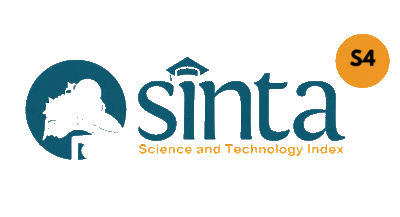BENCHMARKING METODE RANCANG BANGUN WATERFALL DAN PEMODELAN BERBASIS OBJEK
DOI:
https://doi.org/10.47111/jti.v15i2.3000Keywords:
Waterfall Method Unified Modeling Language Object Oriented Modelling BenchmarkingAbstract
This research is a research Benchmarking Waterfall Design Method and Object-Based Modeling. Software development has many models, software methodologies have evolved from time to time, including the Waterfall approach and the UML (Unified Modeling Language) approach. Waterfall is a software development model that is carried out sequentially and very systematically. Meanwhile, UML is a visual modeling method that serves as a means of designing object-oriented systems. The difference between the two models is that Waterfall is a structured method, while UML is a system analysis method, a representation of the programming method. This study aims to perform a comparison or benchmarking of each of these software models, which can assist in determining the most suitable model for the current software development process. The method used in this research is descriptive quantitative method, which analyzes data by describing or describing the data that has been collected as it is. From the results of this study, it can be concluded that the UML method is most suitable for software development, because UML in terms of development, is a method that has undergone evolution from previous methods, so this method can follow the use of users in designing projects on a medium to large scale. That are relevant to the current developments
Downloads
References
Comptia. (2018). IT industry outlook.
https://www.comptia.org/resources/it-industry-trends-analysis. Kaur, R., & Sengupta, J. (2011). Software Process Models and Analysis on Failure of Software Development Projects. International Journal of Scientific & Engineering Research, 2(2), 1-4.
Braun D., Sivils J., Shapiro A., Versteegh J. (2001). Object Oriented Analysis and
Design Team. Kennesaw State University CSIS 4650 - Spring 2001
Jeffrey L. Whitten, Lonnie D. Bentley, and Kevin C. Dittman. (2000). Systems
Analysis and Design Methods 5e (5th. ed.). McGraw-Hill Higher
Education.
Haviluddin. (2011). Memahami Penggunaan UML ( Unified Modelling Language ). Memahami Penggunaan UML (Unified Modelling Language), 6(1), 1–15. Retrieved from https://informatikamulawarman.files.wordpress.com/2011/10/01-jurnal-informatika-mulawarman-feb-2011.pdf
Sidharta, L. (1995). Pustaka Setia Pustaka Setia. Sistem Informasi Manajemen, 1–387.
Dima, A. M., & Maassen, M. A. (2018). From waterfall to agile software: Development models in the IT sector, 2006 to 2018. impacts on company management. Journal of International Studies, 11(2), 315–326. https://doi.org/10.14254/2071-8330.2018/11-2/21
Surya Madaan. (2015). Five Models of Software Development Engineering. International Journal of Scientific & Engineering Research, Volume 6, Issue 11, 6(11), 1331–1334.
Eason, O. K. (2016). Information Systems Development Methodologies Transitions: An Analysis of Waterfall to Agile Methodology. University of New Hampshire, 1–23. Retrieved from https://scholars.unh.edu/honors/286%0Ahttp://scholars.unh.edu/honors%0Ahttp://scholars.unh.edu/honors
Pressman, R. S. (2001). Sofware Engineering: a Practitioner’s Approach-6th ed. (B. Jones, Ed.) (5 th). Americas, New York: McGraw-Hill. Retrieved from http://www.mhhe.com
Rinaldi, R. (2019). Penerapan Unifield Modelling Language (UML) Dalam Analisis Dan
Perancangan Aplikasi E-Learning. Jurnal SIMTIKA, 2(1), 43–50.
Sastra, R. (2017). Metode Pengembangan Perangkat Lunak Waterfall Dalam Perancangan
Sistem Informasi E-Learning . IJSE - Indonesian Journal on Software Engineering, 3(1),
–31. ijse.bsi.ac.id.
Susanto, R., & Andriana, A. D. (2016). Perbandingan Model Waterfall Dan Prototyping Untuk Pengembangan Sistem Informasi. Majalah Ilmiah UNIKOM, 14(1). https://doi.org/10.34010/miu.v14i1.174












